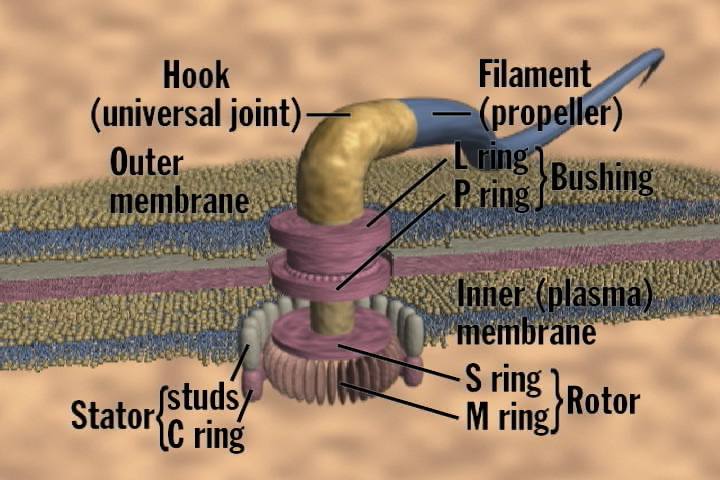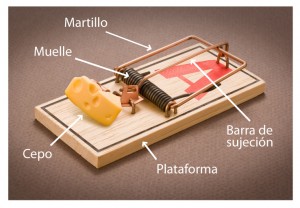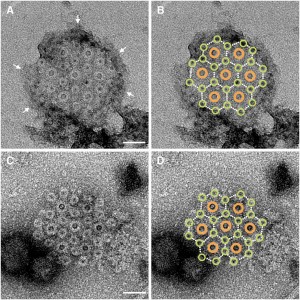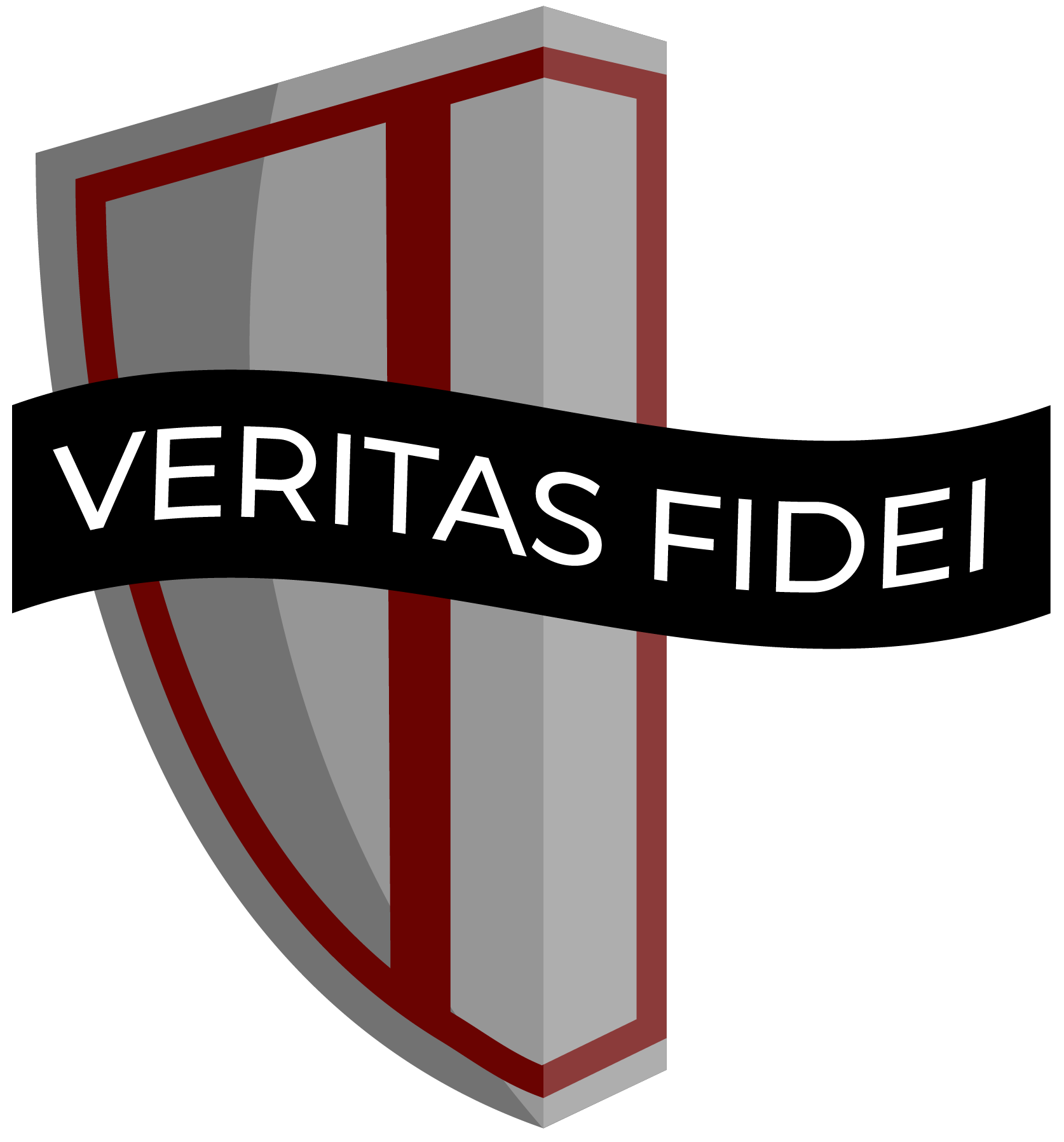
Esta entrada también está disponible en: Spanish
Why Neo-Darwinism Fails – Irreducible Complexity
“If it could be demonstrated,” wrote Charles Darwin, “that any complex organ existed, which could not possibly have been formed by numerous, successive, slight modifications, my theory would absolutely break down. But I can find out no such case.”1 But in recent years, scientists Stephen Meyer, Michael Behe, William Dembski and other intelligent design (ID) theorists have argued that such complex organs have been found in the interior of the living cell, and this has not been satisfactorily explained by naturalistic processes. In this document I challenge neo-Darwinism by presenting clear evidence, based on molecular biology, that some organisms are irreducibly complex2 and could not have evolved3 via random mutation and natural selection.
Mistaken ID
The concepts of ID and irreducible complexity (IC) have been often misunderstood;4 it is thus vital to define our terms clearly: ID theory is a science5 that states that there are characteristics of the universe and living systems that are best explained by a designing intelligence. ID does not make any claim about the identity of the designer, it does not make statements about the age of the earth and it is not creationism. ID uses different resources, including IC, to identify such intelligence.
Intelligent Design is a science that states that there are characteristics of the universe and living systems that are best explained by a designing intelligence.
A system is irreducibly complex if the removal of any of its parts would cause the system to cease to perform its basic function. Irreducibly complex systems are part of “integrated” systems.6
A car is such an example: it has a large number of parts working together. The car is tightly coupled and sensitive to changes on its parts. A portion of these parts is vital for the operation of the car. These parts are what William Dembski and Michael Behe have described as the Irreducible Core.7
In an irreducibly complex system, each part of the core is essential.
—
 An example of IC, used by Michael Behe, is a mousetrap–composed of a hammer, spring, catch, holding bar and platform. Behe explains8 that the removal of any of the elements of the trap renders it useless; it could no longer immobilize a mouse.
An example of IC, used by Michael Behe, is a mousetrap–composed of a hammer, spring, catch, holding bar and platform. Behe explains8 that the removal of any of the elements of the trap renders it useless; it could no longer immobilize a mouse.
ID critics Kenneth Miller, John McDonald and others have argued that Behe’s mousetrap is not irreducibly complex, and they proceed to show examples of simpler mousetraps.9 However, according to Behe, these examples fail for 3 reasons:
- McDonald’s reduced-component traps are not single-step intermediates in the building of the mousetrap I showed.
- Intelligence was intimately involved in constructing the series of traps.
- If intelligence is necessary to make something as simple as a mousetrap, we have strong reason to think it is necessary to make the much more complicated machinery of the cell.10
The mousetrap is a good example of irreducible complexity formed by a handful of simple parts.
The Bacterium’s Engine
In Darwin’s day, the internal cellular operation was mostly unknown. Since then, scientists have found that the simplest organisms contain a complex group of interacting nanosystems responsible for synthesis, degradation, energy generation, replication, maintenance, mobility, regulation, repair and communication—all necessary for the proper operation of the cell.
The simplest organisms contain a complex group of interacting nanosystems.
The flagellum is irreducibly complex because it is not evolvable—step by step—by naturalistic processes and the removal of any of its parts would render it useless.
The flagellar system from the e coli bacteria is well understood; it is composed of about 40 proteins that combine into a complex rotary motor—including stator, rotor, driveshaft, u-joint, o-rings, propeller and a recently discovered clutch.11 These micro-engines can rotate bi-directionally at extremely high speeds (some known to reach up to 100,000 rpm). According to Dembski and Wells, in order to reach such speeds, the flagellum needs the interaction of “about thirty proteins and another twenty or so proteins to assist in their assembly. Yet the absence of any of these proteins would result in complete loss of motor function. These proteins form the irreducible core of the flagellum.”12 Eminent biologist Howard Berg from Harvard University has called it “the most efficient machine in the universe.”13 ID does not offer simply imagination; it offers a superior and sufficient explanation.
The IC Criticism: Why it Fails
IC is not Lack of Imagination
According to evolutionary biologist Richard Dawkins, IC represents a “failure of the imagination” and represents a “God of the Gaps” argument14. Dawkins also indicates that ID is “lazy and defeatist.” He sums up his argument as follows:
Since irreducible complexity is being deployed as an argument for design, is should no more be asserted by fiat than design itself. You might as well simply assert that the weasel frog (bombardier beetle, etc.) demonstrates design, without further argument or justification. That is no way to do science. The logic turns out no more convincing than this: ‘I [insert own name] am personally unable to think of any way in which [insert biological phenomenon] could have been built step by step. Therefore it is irreducibly complex. That means it is designed.’ Put it like that, and you immediately see that it is vulnerable to some scientist coming along and finding an intermediate; or a least imagining a plausible intermediate.15
From Dawkins’ own observations, the appearance of design demands an explanation; but
Dawkins dismisses even the possibility of intelligent design without offering a better explanation.
Dawkins joins Miller and other biologists by misrepresenting the concept of IC advanced by Behe: “The key to demonstrating irreducible complexity is to show that none of the parts could have been useful on its own.” This is a grossly inaccurate straw man representation of IC. Dawkins seems to imply that those parts could have been chosen by natural selection for other purposes, and then incorporated (or evolved) into another system. They appeal to the similarities that exist between the bacterial flagellum and a cellular system called Type Three Secretory System. 16
The T3SS is a needle-like system used by some bacteria (similar to the one that caused the bubonic plague) to inject toxins to a host organism. Dawkins and Miller suggest that the flagellum might have evolved from this smaller needle but offer absolutely no evidence for this claim.
Dawkins and Miller suggest that the flagellum might have evolved from the T3SS but offer absolutely no evidence for this claim.
Co-option does Not Eliminate IC
To explain how the bacterial flagellum and other complex structures in the cell evolved, other biologists propose an evolutionary path by which some parts of a simpler system—like the T3SS—may have been ”borrowed” to form a more complex system; this is known as co-option or exaptation. The process would be similar to having parts of a laptop computer recombining, in small gradual steps, to generate a more efficient CPU without losing machine function. As such, co-option has many devastating flaws:
(1) “Simply having all the parts for a system” Behe explains “is not enough: one must also have the proper assembly instructions for those parts.”17 Those assembly instructions are missing. Even if the instructions are eventually found, the neo-Darwinist would need to provide a naturalistic explanation for their emergence.
(2) The system needs to be functional while slight modifications are operating in it. In this case, the T3SS would need to evolve into a flagellum without affecting the functionality of the injection system. This would be like trying to change a jet engine in full flight. The flagellum would need multiple co-options/modifications to work in concert. As William Dembski explains:
“Even if all the parts (i.e., proteins) for a bacterial flagellum are in place within a cell but serving other functions, there is no reason to think that those parts can spontaneously break free of the system in which they are currently functioning to form a tightly integrated new system such as the flagellum.”18
Even if random mutation gave the cell redundant proteins, those would have to recombine with other non-essential spare parts without specific instructions at the right times in very specific ways for a complex system to form. An unlikely and highly improbable scenario.
(3) Co-option has never been observed to occur in nature. All we have from the Darwinian scientific community is a speculative oasis of scenarios but no supporting evidence.19
(4) The idea that the flagellum evolved from the T3SS is logically flawed. Water has existed on earth since the origin of life. It is logical to think that bacterium would need a means of locomotion early on. The function of the T3SS depends on the existence of multicellular organisms. This would be a later development in a species’ life-cycle. If this is true, then the flagellum is a predecessor of the T3SS and could not have evolved from it. In any case the T3SS could have de-evolved from the flagellum, but then here we would be explaining the simple in terms of the complex! ID critics need to provide a seamless and gradual Darwinian co-option process by which IC systems emerge.
If the flagellum evolved from the T3SS, then we would expect the genes of the T3SS to be older than those of the flagellum, but that is not the case!
(6) Explaining the existence of a standard flagellum is already a difficult task for neo-Darwinism.
In 2012 a group of Japanese researchers published the discovery of a bacterium with a seven-engine, magnetic-guided flagellar bundle that gets zero to three hundred micrometers in one second.
 Japanese researchers published
Japanese researchers published 20 the discovery of a bacterium with a seven-engine, magnetic-guided flagellar bundle that gets zero to three hundred micrometers in one second—ten times faster than e-coli. The key to this extraordinary machine is an hexagonal array of 24 gears surrounding 7 flagella that work as a unit. Co-option would need to explain how such organ could have evolved, step by step, by borrowing parts and incorporating them into such a complex engineering marvel.
20 the discovery of a bacterium with a seven-engine, magnetic-guided flagellar bundle that gets zero to three hundred micrometers in one second—ten times faster than e-coli. The key to this extraordinary machine is an hexagonal array of 24 gears surrounding 7 flagella that work as a unit. Co-option would need to explain how such organ could have evolved, step by step, by borrowing parts and incorporating them into such a complex engineering marvel.
Facilitated Variation does not Fill Darwinism’s Gap
Another naturalistic theory that biologists Marc W. Kirschner and John C. Gerhart have developed to explain how complex life features could have evolved is called Facilitated Variation (FV). They admit that “…the path from the bacterium-like ancestor toward humans, we find repeated episodes of great innovation.”21 They suggest that living organisms have a “core” of basic processes that has been preserved from a common evolutionary ancestor. Some of this core includes protein synthesis, DNA transfer and metabolism. This core allows the organisms to be “biased” towards variations useful for evolution, giving way to complex structures. But their theory has a major flaw; both Kirschner and Gerhart have acknowledged that they ignore how this “core” system developed in the first place:
“Everything about evolution before the bacteria-like life forms is sheer conjecture, so we start this narrative with the bacteria-like ancestor and its complex collection of biochemical and molecular biological core processes.”22
Their theory therefore “suffers from as big a gap as the Darwinian theory they sought to correct.”23
If the source of the complexity in biological systems is embedded in the “core” of the system—which is already a vastly complex structure—then it is important for the theory of FV to explain how the complex core actually did arise.”
Conclusion
From the above analysis, we can see that Dembski is right when he says,
“If a creature looks like a duck, smells like a duck, quacks like a duck, feels like a duck, and swims like a duck, the burden of evidence lies with those who insist the creature isn’t a duck.”24
Neo-Darwinism has been shown to be a poor explanation of how complex organs came into being. If the bacterial flagellum looks designed, maybe it is because it is designed—as Dembski suggests—and the reader is amply justified to think that intelligent design is a superior alternative to neo-Darwinism.
- Charles Darwin, The Origin of Species, (London: John Murray, 1859), 189.
- “An irreducibly complex system cannot be produced directly (that is, by continuously improving the initial function, which continues to work by the same mechanism) by slight, successive modifications of a precursor system, because any precursor to an irreducibly complex system that is missing a part is by definition nonfunctional.” Michael Behe, Darwin’s Black Box: The Biochemical Challenge to Evolution, (New York: Free Press, 1996), 42.
- “The evolutionary biologist Francisco Ayala points out that the word ‘evolution’ can be used to mean at least three different things:
(1) The process of change and diversification of living things over time. It is in this sense that biologists say that evolution is a fact. But obviously this fact, so stated, is innocuous and would not be disputed even by the most fundamentalist Young Earth Creationist
(2) Reconstruction of evolutionary history, showing how various lineages branched off from one another on the universal tree of life.
(3) The mechanisms which account for evolutionary change. Darwin appealed to natural selection operating on random variations in living things in order to explain the adaptedness of organisms to their environment. With the development of modern genetics, genetic mutations came to supplement the Darwinian mechanism of natural selection by supplying an explanation for the variations on which natural selection works. Accordingly, we can call this hypothesis neo-Darwinism”. As quoted by William Lane Craig, “Why is Evolution So Widely Believed?,” Reasonablefaith.org, http://www.reasonablefaith.org/why-is-evolution-so-widely-believed, (accessed February 26, 2013).
- National Academy of Sciences and Institute of Medicine, Science, Evolution, and Creationism, (Washington, D.C: National Academies Press, 2008), 40. Edited by eminent biologists including Francisco Ayala, states that “(Intelligent design creationists) argue that IC is echoing ‘theological’ arguments that predate the theory of evolution.” This is inaccurate as IC makes no theological claims or identifies an intelligent source.
- In simple terms, science attempts to formulate a causally adequate explanation of the phenomenon in question.
- For a detailed explanation of IC as part of integrated systems see William Dembski and Jonathan Wells, The Design of Life : Discovering Signs of Intelligence In Biological Systems, (Dallas: The Foundation for Thought and Ethics, 2007), 146.
- “To say that a core is irreducible is then to say that no other systems with substantially simpler cores can perform the system’s basic function. The Basic function of a system consists of 3 things: (1) What the system does in its natural setting or proper context; this is known as the system’s primary function (also main function). (2) The minimal level of function needed for the system to perform adequately in its natural setting or proper context; this is known as the system’s minimum function. (3) The way or manner in which the system performs its primary function; this is known as the system’s mode of function.” Dembski and Wells, The Design of Life, 146-47.
- Paraphrased from Michael Behe, Darwin’s Black Box: The Biochemical Challenge to Evolution, (New York, Free Press, 1996), 42.
- From John H. McDonald, “A reducibly complex mousetrap,” University of Delaware, http://udel.edu/~mcdonald/mousetrap.html (accessed Mar 5, 2013), McDonald shows various stages of mousetraps, starting with an inefficient trap made out of a single spring wire, then, through a series of modifications and additions of parts, makes better mousetraps until the end result is the modern mousetrap. For a complete refutation from Behe of this process please see Michael Behe, “A Mousetrap Defended: Response to Critics,” Discovery Institute, http://www.discovery.org/a/446 (accessed Feb 12, 2013).
- Michael Behe, “A Mousetrap Defended: Response to Critics,” Discovery Institute, http://www.discovery.org/a/446 (accessed Feb 12, 2013).
- The clutch is a relatively new discovery. See “More Similarities between Flagellum and Human-Designed Machines”, Evolution News, http://www.evolutionnews.org/2008/06/more_similarities_between_flag008371.html (accessed February 26, 2013).
- Dembski & Wells, The Design of Life : Discovering Signs of Intelligence In Biological Systems, (Dallas: The Foundation for Thought and Ethics, 2007), 150.
- As quoted by Dembski & Wells, The Design of Life, 149.
- A “God of the gaps” argument is when someone appeals to God as the source of an unknown phenomenon.
- Ibid.
- “The T3SS has approximately 10 proteins that have close homologues in the thirty-protein flagellar motor.” Stephen Meyer, Signature in the Cell (New York, NY, HarperCollins, 2009), 429.
- Michael Behe as quoted by Casey Luskin, “DO CAR ENGINES RUN ON LUGNUTS? A RESPONSE TO KEN MILLER & JUDGE JONES’S STRAW TESTS OF IRREDUCIBLE COMPLEXITY FOR THE BACTERIAL FLAGELLUM”, Evolution News and Views, http://www.discovery.org/a/3718 (accessed February 26 2013).
- Dembski and Wells, The Design of Life, 152.
- According to Dembski; “The Scientific literature shows a complete absence of detailed, testable, step-by-step proposals for how coevolution and co-option could actually produce irreducibly complex biochemical systems.”, Dembski & Wells, The Design of Life, 155.
- Juanfang Ruan et al., “Architecture of a flagellar apparatus in the fast-swimming magnetotactic bacterium MO-1,” ed. Howard C. Berg, Proceedings of the National Academy of Sciences of the United States, http://www.pnas.org/content/early/2012/11/21/1215274109.abstract (accessed Feb 26 2013).
- Mark W. Kirschner and John C. Gerhart, The Plausibility of Life: Resolving Darwin’s Dilemma, (New Haven and London: Yale University Press, 2005), 67.
- Kirschner and Gerhart, The Plausibility of Life: Resolving Darwin’s Dilemma, 50.
- Dembski and Wells, The Design of Life, 108.
- Ibid., 161.



